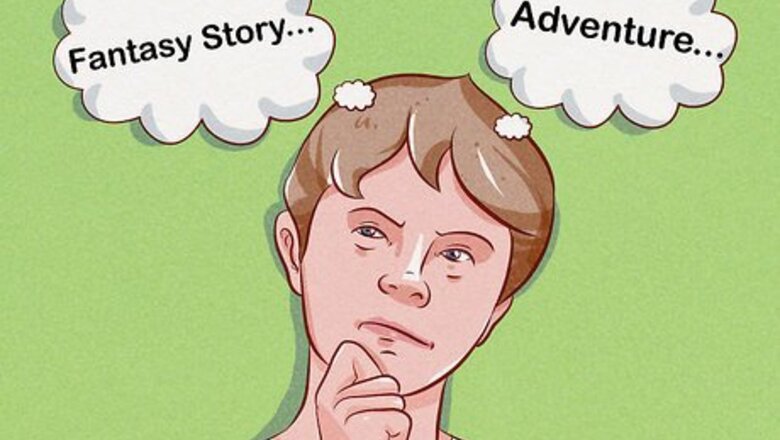
views
Creating the Story
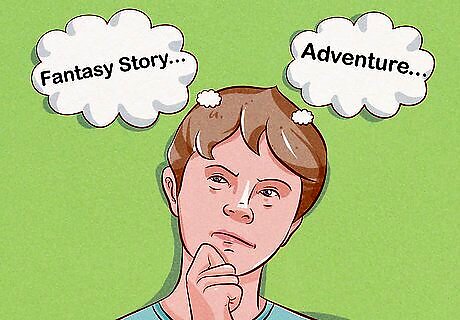
Brainstorm ideas by yourself or with friends. What do you want your movie to be about? Do you want an exciting adventure? Do you want a fantasy story? Do you want a love story? You could also try action, mystery, or science fiction. If you're not sure where to start, think about your favorite movies. You don't want to copy them, but you can make a similar movie. You can also mix and match ideas. You don't have to choose just one! But, try not to let it get too crazy. Save some ideas for the next movie. You can even make a movie based on one of your favorite books or stories!

Decide who the main character is going to be. The main character is the person who leads the story. For instance, in the film Brave, Merida is the main character. She's the hero, and the story is all about what happens to her and what decisions she makes. You can have more than one main character, such as Nemo and Marlin in Finding Nemo. Basically, your main character will drive the story forward. Your movie is all about them and what they do.
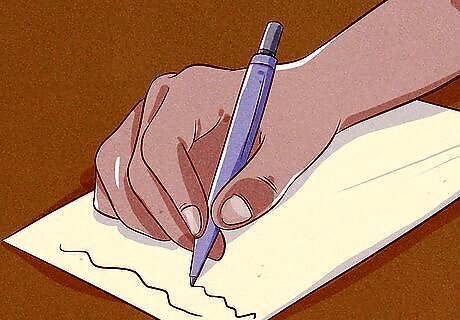
Write down your basic story in 2-3 sentences. "Story" is also known as "plot." Basically, it's just what happens. Writing it down in a few short sentences can help keep you focused. Think about what happens to your main character. Maybe you want them to go on a journey to find treasure. That's the end of the story, so your sentences could be: "Jessie finds a map in her attic with a mysterious place marked on it. She decides to find the place! Along the way, she meets Robbie, a very smart young boy in the neighborhood, and they follow the map and find treasure." You can also write it as "What if?" statement, such as "What if a girl finds a map in her attic that leads her to a buried treasure?"
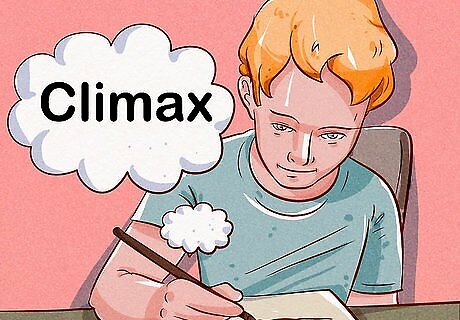
Make sure your story has a high point. When first starting your story, your character is going through normal life. They need something to set them off on a journey, such as the map in the example. They need to be working towards something, which results in the high point of the story, called the climax. The climax is the most exhilarating part of the story. It's the point where a suspect is about to get caught in a mystery, or in our case, it could be the point where Jessie finds the treasure on the map... or finds out there's nothing there.
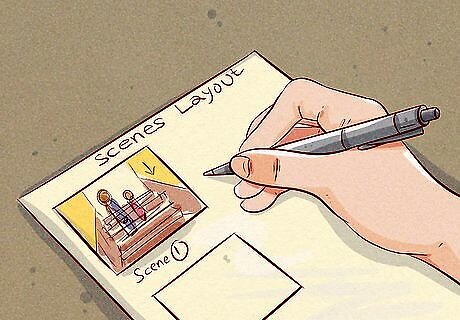
Break your story into scenes. A scene is a smaller section of a movie. One scene is usually made up of unbroken time and action. In other words, each scene stands by itself, kind of like a chapter in a book. For instance, say your character starts out hanging out downstairs, bored, with her mom. That's 1 scene. Then, she is searching the attic and finds a map, scene 2. Downstairs again, she asks her mom if she can go see her friend, scene 3.
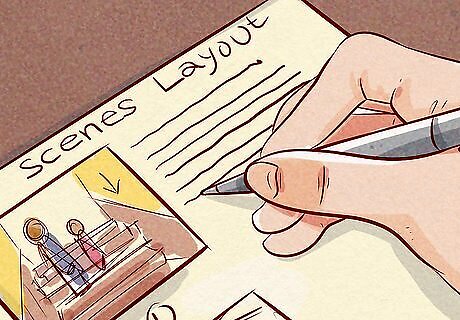
Write a short description of each scene. Try writing a couple of sentences for each scene you want to create. You're writing out your story from start to finish. Just describe each scene one by one. For instance, you might write: Scene 1: Jessie is hanging out downstairs looking bored and watching the clock. Her mom tells her to do her homework, but Jessie says it's already done. Her mom tells her to go find something to do, so she sighs and goes upstairs. Scene 2: Jessie is in the attic of the house, moving things around and looking in boxes. She's looking in the bottom of an old wardrobe when something catches her finger at the bottom. She peels up a board and finds the treasure map. Scene 3: Jessie is downstairs, asking her mom if she can go talk to her friend. Her mom says yes and she runs down the block.
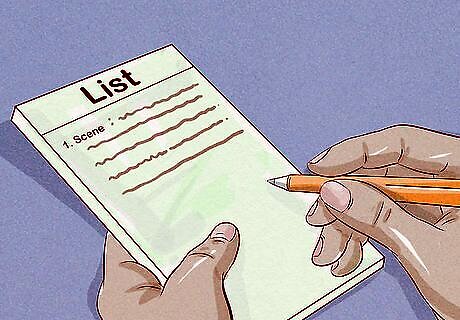
Put your story in script format. Script format is a little strange. Start by listing where the scene is. Then, you can add a description of the room and anything that's happening in the scene. For example, for scene 1 and 2, you might write it like this: Scene 1Living room, mid-afternoon.The living room is cozy with a sofa and 2 arm chairs. Light streams in from large windows. Jessie, 12, is lounging in a chair, looking bored, while her mother looks on from the kitchen. Scene 2Attic, a few minutes later.The attic is dusty and filled with boxes and other random stuff. Jessie, 12, is digging through boxes and moving around the room.
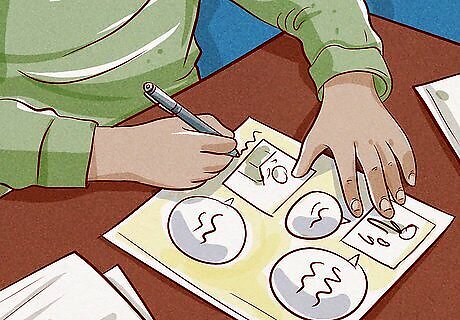
Add the dialogue. The dialogue is what the characters say to each other. Sometimes, a character can even talk to themselves if no one is around. Dialogue can sound a little off if you just write it, so try saying it out loud! Think about how you talk to your friends and how you'd talk to your parents or teachers. It's different, isn't it? That should be reflected in your dialogue. Use italics to show that some lines aren't spoken, but rather, performed by the actor instead. Keep going through the dialogue and action notes until you finish with the scene. For the first scene, you might start out writing: Jessie: I'm so boooored.Jessie sighs and leans on her arm.Mom: If you're that bored, go do your homework.Jessie rolls her eyes.Jessie: I already did my homework.

Make a list of all the characters in your story. You need people to play each character. That means you need to know how many you have first. Write down each character and something about them, such as their name, age, and personality. For example, you might write, "Jessie is a 12-year-old kid who likes books and plays soccer. She is always getting into trouble because she goes off on adventures."
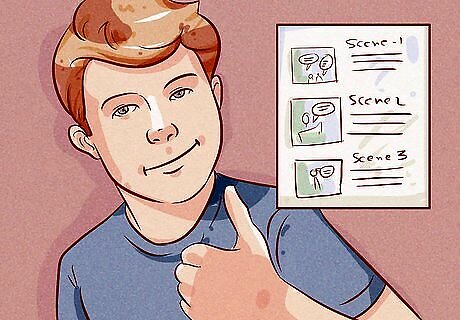
Finish out all your scenes to complete the story. Write out dialogue, description, and action for each scene in your story. Once you're done, you can get started on the next part!
Getting Your Cast, Locations, and Rehearsals Together
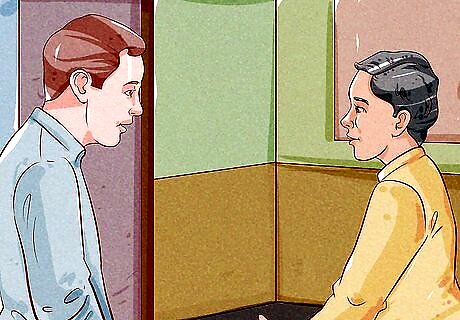
Pick a location or two. If this is your first movie, keep it simple. Choose 1 or 2 places where you can shoot your movie, not more. It can even be just inside your home with props borrowed from around the house! You can shoot in your backyard or at your local park. If you want to shoot in a building, ask the owner if you can use it first. Pick a place that fits your movie. For instance, most scary movies aren't filmed outside in bright sunshine, and an adventure story may need more than 1 location.
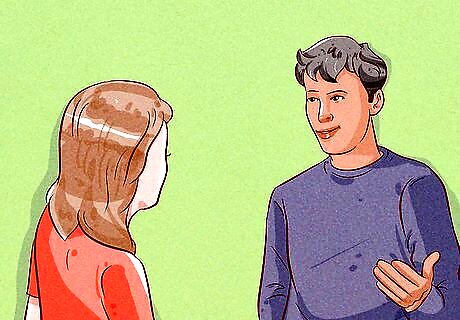
Ask people to be in your movie. See if your friends want to play parts. Let them know they'll have to memorize lines which can be a little hard! Your parents or siblings might also want to get in on the action. For instance, you could say, "Hey, I'm making a movie! Do you want to be in it? You'd have to memorize some lines, but it could be a lot of fun!"
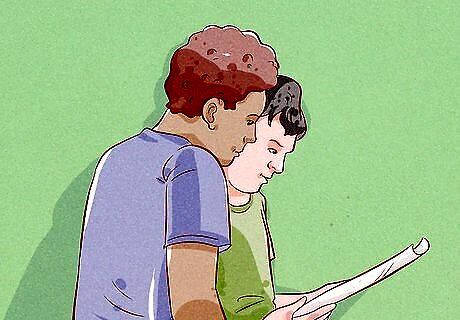
Cast your characters. "Casting" means putting people in different roles. Once you gather everyone together, have them read different lines. That way, you can see which person is best for each character in your story. Then, decide who you want in each role based on how they read and whether they fit the part or not. You can always change your characters around if no one fits a character exactly. Be flexible. Give each person a copy of the script to read. You can highlight their parts to help them out. Make sure you give each person who's interested something to do. If they don't want to act, have them help set up scenes or assist people with memorizing their lines.
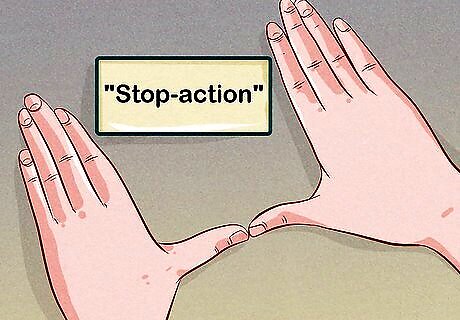
Try a stop-action movie if you don't have a cast. "Stop-action" just means you use small figures and take pictures of them. Each time you take a picture, you move the figures a little. When you put the pictures together in a movie format, it looks like the figures are moving. For instance, you could use dolls, action figures, clay, or even building blocks as your stop-action figures.

Run through the script a few times. Start by having everyone sit around and talk through the script. That is, you can read the description and action, and each other person can read their lines out loud. This helps them get an idea of how the movie will work. It also lets you make changes if things aren't quite working.
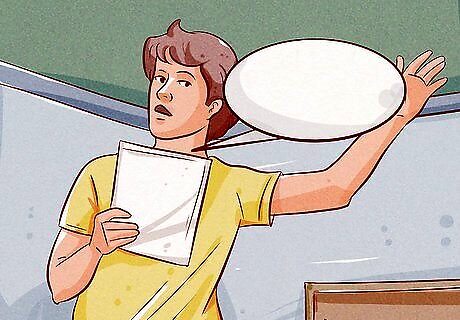
Rehearse each scene with blocking. Work in the location you're going to be using, and go over the lines in each scene. As you do, set up blocking. Blocking is where the actors will move while they're being filmed. Blocking is important because you want them to stay on camera. You also want to make sure they face the camera most of the time. For instance, you might rehearse how Jessie's mom will come in from the kitchen in the opening living room scene, always facing the camera.
Shooting the Movie
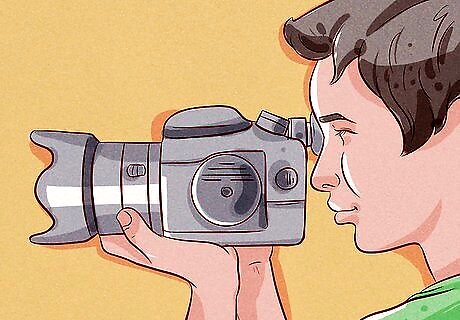
Find a camera to use. These days, it's pretty easy to find cameras to shoot movies. You can use a smartphone, a tablet, a digital camera, or, if you have one around, a better quality film camera. It should be able to record audio, as well. Make sure you know the camera really well before you begin shooting. Play around with it first or look at tutorials online if you don't know how to use it. Just remember movies take up a lot of memory. You may need to download your videos to a computer with more memory from time to time so that you have enough space to keep shooting. Always ask before you borrow a camera or smartphone! Also, be very careful with borrowed equipment.
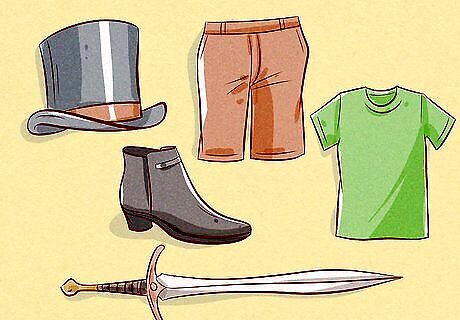
Drag out props and costumes. Props are things that you use in your movie, like swords, cups, books, or anything object that moves the story along. Costumes are what the people in the story wear. You can use everyday clothes or pull out old Halloween costumes. Try to make them fit the story and your characters. For instance, a 12-year-old girl who likes adventure might wear sturdy but fun boots, a long pair of shorts, a colorful t-shirt, and her hair up. Look around your house for props you can use. Remember to ask before borrowing them. If you need something extra, try asking your parents if they have what you need, borrowing from a neighbor, or asking your parents to take you to a thrift store. Props don't have to be "real." For instance, if you need a sword, you can make one out of cardboard and foil.
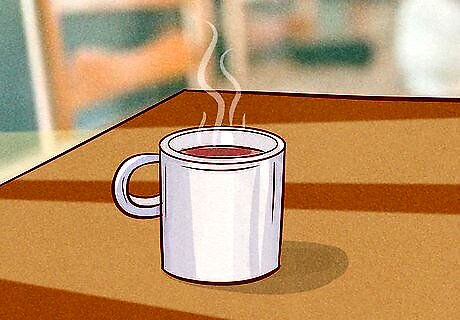
Set up a scene by moving things around in your location. When you first go in to shoot a scene, look around. Is the lighting good? You should be able to see your characters pretty well. Is everything in the room that you need for the scene? If you need a coffee mug for the scene, make sure it's there. Think about how the room or area will look on screen and adjust the room. It can help to hold up your hands in a square (to show you how much you'd see) or simply look through your camera without recording. If the lighting is bad, adjust as needed. Turn on lights or open curtains. Try not to blind your actors, though! For instance, if you have 2 characters talking to each other, you may want to be able to see them in one shot. That means you may need to move chairs around so they're closer together.
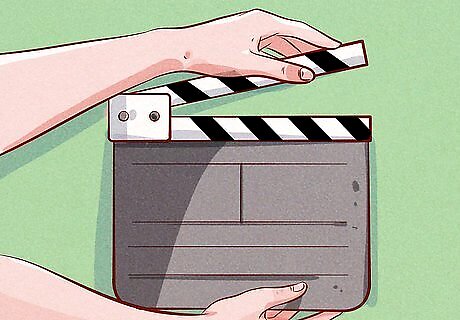
Shoot that scene. After each person has memorized their lines for a scene, you can start filming. You say "Action" to start the scene, and then it begins. Your characters should move around like you've written in the script and say their lines to each other. You can change things if the scene isn't working. Try to help people out if they seem a little lost. For instance, if someone doesn't know how to act in a scene, try to give them motivation. You could say, "How would you feel if you just found a treasure map? Wouldn't you be a little curious first and then get more and more excited? How would that make you act?"
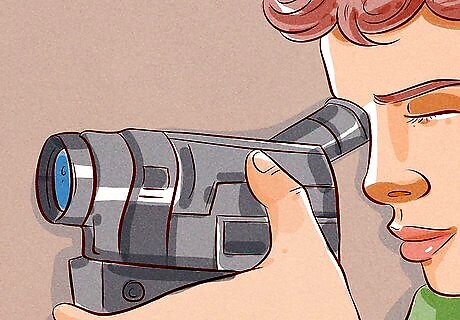
Set up and shoot the remaining scenes. Repeat the action of setting up each scene. Look at each one carefully to make sure you've got it set properly. Then, shoot each scene as you set it up.
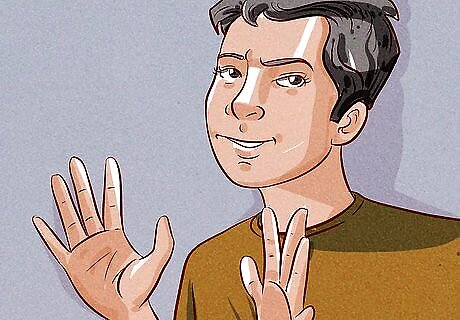
Encourage your actors to make gestures and facial expressions. Acting involves more than just saying the lines. Your actors need to react to each other like they would in real life. If someone says something mean, the person they're saying it to will look angry or hurt, for instance. So if you notice an actor is smiling after another character says something mean, stop and talk to them. You could say, "When that person says something mean, react like they're saying it to you personally. Wouldn't you frown or look upset?"
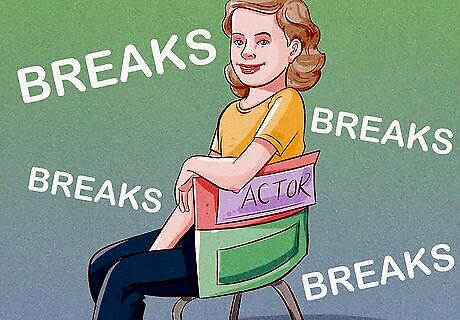
Give your actors lots of breaks. Kids and adults can have short attention spans, and they may not want to act for hours on end. Try shooting a single scene in a day, for instance, so you don't overwhelm your actors. If they want to do more, that's great. Just make sure you're listening to what they're saying. If they're bored with it for today, stop and do something else!

Take more video than you think you need. When you cut down your movie, you'll need more footage than you think. It takes lots and lots of footage to get the shots that you want. Then you can pick and choose to create your perfect movie. For instance, try shooting the same scene at least a couple of times. That way, you can pick the best shots if something goes wrong in the scene at some point. It can help to shoot the scene from different spots in the room. That way, you can cut between different shots. For instance, if you shoot from the perspective of the stairs, then from the kitchen, you can move between those two perspectives as your characters are talking. Plus, if you need to use footage from different videos, you can do it without making the movie look like it's jumping by switching to a different angle.
Editing the Movie

Use movie-making software to edit your film. Most computers come with movie-editing software, like iMovie or Windows Movie Maker. You can use the software to take out parts of your videos and put other parts together. You can also use it to add transitions, music, and credits. You can also try apps like Magisto, Toontastic, GoAnimate, or Animoto. If you don't know how to use the software you have, try looking up tutorials online.
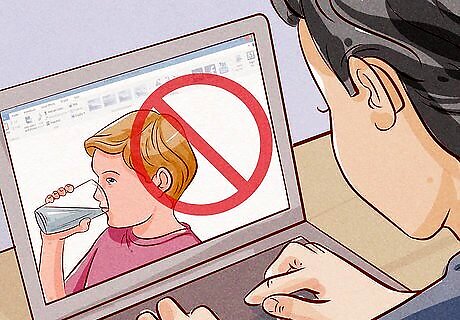
Take out what you don't need. You probably shot some scenes over and over. Start by moving what you don't need out of your main movie. Try to pick the videos where your actors did the best. You can even pick parts from different videos and put them together in the same scene. For instance, maybe someone spilt their drink in one video, but the actors did the best on their lines early on in the scene. You can use part of the first video and replace the second part with shots from another video.
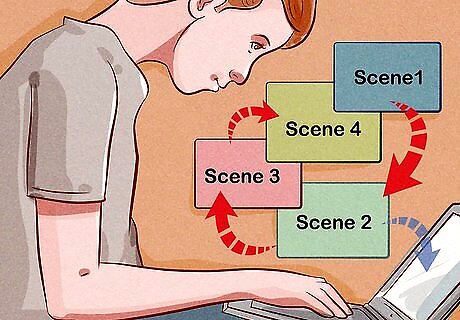
Order your scenes. Now that you've taken out what you don't need, make sure your scenes are in the order you want them in. They should have a logical flow from start to finish so that your viewers can follow your story.
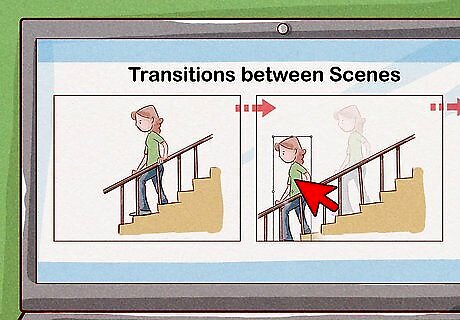
Add transitions between scenes. A transition is how you get from one scene to the next visually, such as fading, cutting, or dissolving. You can add different types of transitions, depending on the scene. For instance, a cut goes directly from one scene to the next, replacing the image instantly. A fade slowly goes down to black, and then brings up the next scene. A dissolve is when the scene slowly disappears as the next one slowly appears. For instance, when moving between scenes 1 and 2 in your movie, where Jessie goes upstairs, you might try a cut since not much time goes by.
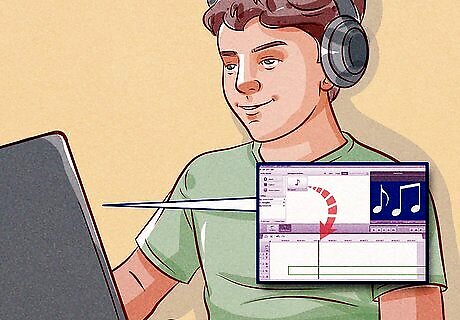
Put in music to help set the mood. Pretty much all movies use music to set the mood. You can use your favourite songs, but make sure they fit the scene. You can also use instrumental music (music without words) to help create a mood. For instance, maybe when Jessie is looking around the attic, you can play quiet music with a good beat that makes you think of someone being curious. Your video-editing software should let you add music. Make sure your music doesn't overpower the dialogue. If you have it playing in a scene with dialogue, it should be much softer than what's being said.
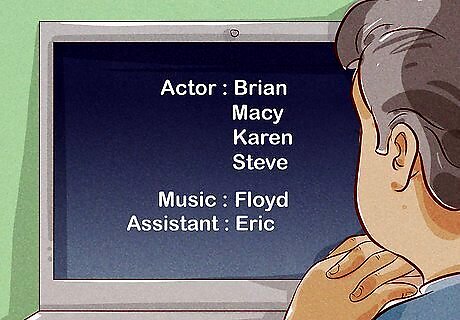
Finish your film off with opening and closing credits. At the beginning of the movie, you should have the title of your film. Usually, you add it over the opening scene, which you can do in movie-making software. You can also add the names of the main characters and actors if you want. At the end, you can include rolling credits with all the actors' and characters' names. At the end, include anyone else who helped with the film. List any music you use to give credit for it. Put the date in, too.











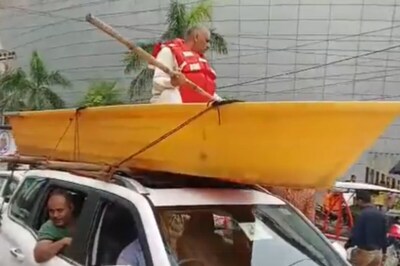
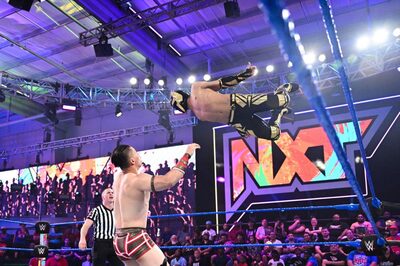

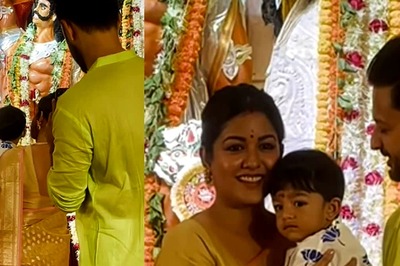




Comments
0 comment